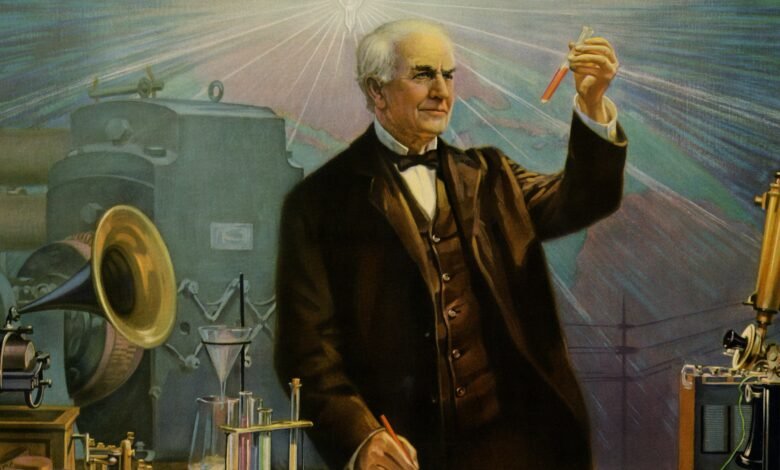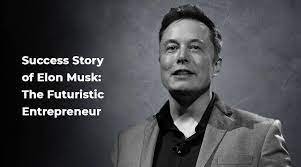Thomas Edison: The Pioneering Inventor Who Lit Up the World
Brilliance, Innovation, and the Glow of Progress

Thomas Alva Edison, often referred to as the “Wizard of Menlo Park,” was an American inventor and entrepreneur whose groundbreaking contributions to the fields of electricity and telecommunications changed the world. With a prolific career spanning several decades, Edison is best known for his invention of the practical electric light bulb, but his legacy extends far beyond that single achievement. In this article, we will explore the life, inventions, and enduring impact of Thomas Edison, an iconic figure in the history of innovation.
What was the Early Life and Education of Thomas Edison?
Thomas Edison was born on February 11, 1847, in Milan, Ohio, to Samuel Ogden Edison Jr. and Nancy Matthews Elliott. He was the youngest of seven siblings. His family moved to Port Huron, Michigan, when he was a child. Edison’s early education was limited, and he spent only a few months in a formal school. His mother, a former teacher, played a significant role in his early education, and Edison developed a love for reading and self-learning.
At the age of 12, Edison began working as a newsboy on the Grand Trunk Railway, where he conducted experiments and learned about the telegraph system. This early exposure to technology and innovation would shape his future endeavors.
How was Edison’s mother the best teacher for him?
Thomas Edison’s mother, Nancy Matthews Elliott Edison, played a significant role in his life by fostering his early love of learning and providing a supportive environment for his intellectual growth. Her influence on him during his formative years was instrumental in shaping his character and his approach to education. Here are some ways in which Edison’s mother played a crucial role in his life:
- Encouragement of Reading and Self-Learning: Edison’s mother recognized her son’s curiosity and love for reading from a young age. She encouraged his reading habits and provided him with books. Nancy Edison’s support for his self-learning laid the foundation for Edison’s lifelong pursuit of knowledge and his ability to teach himself about various subjects.
- Provision of a Home Learning Environment: When young Thomas’s teacher labeled him as “addled,” implying that he had a mental deficiency, his mother did not accept this diagnosis. She chose to educate him at home and continued to nurture his inquisitiveness. Edison credited his mother with teaching him how to read and write, fostering an environment that valued learning.
- Introduction to Experimentation: Edison’s mother allowed him to conduct experiments and pursue his interests. She provided him with basic equipment and materials for his early experiments, which included creating a chemical laboratory in their basement. This early hands-on experience helped him develop practical problem-solving skills and a love for experimentation.
- Development of Strong Work Ethic: Edison’s mother instilled in him a strong work ethic. She encouraged him to be diligent and hardworking in his pursuits. This work ethic became a defining characteristic of Edison’s personality and played a vital role in his success as an inventor and entrepreneur.
- Belief in Persistence: Nancy Edison taught her son the value of persistence and determination. She supported his efforts to overcome obstacles and setbacks. This lesson proved invaluable to Edison as he faced numerous challenges and failures throughout his career as an inventor.
- Emphasis on Moral Values: Edison’s mother also instilled in him a strong sense of moral values. She taught him the importance of honesty, integrity, and compassion. These values would guide his personal and professional life and influence his interactions with colleagues and collaborators.
- Support during Difficult Times: Nancy Edison’s unwavering support during challenging moments in Edison’s life, including his struggles with deafness and his early failures, helped him maintain a positive outlook. Her encouragement and belief in his abilities provided him with emotional strength and resilience.
Early Career and Entrepreneurship
Edison’s first job as a telegraph operator began in 1863 when he was just 16 years old. He worked for the Grand Trunk Railway and later for Western Union. During this time, he honed his telegraphy skills and started inventing improvements for telegraph systems. In 1868, he received his first patent for an electrical vote recorder.
In 1869, Edison moved to New York City, where he began working as a full-time inventor. He established his first laboratory in Newark, New Jersey, and continued to work on various inventions, often selling his innovations to finance his research.
6 Key Inventions by Thomas Edison
The Phonograph
One of Edison’s earliest and most famous inventions was the phonograph, which he patented in 1877. The phonograph was the first device capable of both recording and reproducing sound. Edison’s groundbreaking invention revolutionized the world of music and entertainment. It allowed people to capture and play back audio, marking the beginning of the recording industry.
The Electric Light Bulb
Edison’s most famous invention, the practical electric light bulb, was patented in 1879. Although he did not invent the concept of electric lighting, Edison improved upon existing designs to create a commercially viable and long-lasting incandescent bulb. This innovation transformed the way people lived and worked, enabling illumination in homes, streets, and workplaces, and reducing the reliance on gas lamps and candles.
The Power System
Edison recognized that the electric light bulb needed a reliable source of electricity to be practical. In 1882, he launched the first central electric power plant in New York City, which marked the birth of the modern electric power industry. Edison’s system used direct current (DC) to transmit electricity to homes and businesses.
The Motion Picture Camera
Edison continued to innovate and held over 1,000 patents by the time he was in his 30s. Among his inventions was the kinetoscope, a motion picture camera that he patented in 1891. This device allowed for the recording and viewing of short films, marking the early days of motion pictures and cinema.
The Phonograph Records
In addition to his work on the phonograph, Edison also played a significant role in the development of recorded music. He introduced the use of wax cylinders for audio recording, which later evolved into the standard format for phonograph records.
The Storage Battery
Edison was not limited to electrical and audio inventions. He also contributed to the development of storage batteries, commonly known as rechargeable batteries. His work in this field had applications in various industries, including electric vehicles and telecommunications.
The Legacy of Thomas Edison
Thomas Edison’s influence on the world of invention and innovation cannot be overstated. His contributions to science and technology have left an indelible mark on society. Some key aspects of his legacy include:
- Electrification: Edison’s development of electric lighting and power systems paved the way for the widespread adoption of electricity in homes, cities, and industries. It changed the way people lived and worked, contributing to modernization and economic growth.
- Entertainment Industry: Edison’s inventions, such as the phonograph and motion picture camera, laid the foundation for the modern entertainment industry. The recording and film industries owe a debt of gratitude to his pioneering work.
- Innovation and Entrepreneurship: Edison’s approach to innovation, characterized by relentless experimentation and problem-solving, serves as a model for aspiring inventors and entrepreneurs. His commitment to improving existing technologies and his entrepreneurial spirit are celebrated worldwide.
- Impact on Education: Edison’s commitment to self-learning and his pursuit of knowledge have made him an inspiration in the field of education. His example underscores the value of curiosity, self-discipline, and continuous learning.
- Technological Advancements: Edison’s inventions contributed to the advancement of various technologies, including telecommunications, audio recording, and battery systems. Many of his innovations have undergone further development and refinement, benefiting multiple industries.
- Patents and Intellectual Property: Edison’s numerous patents and contributions to the field of intellectual property have shaped the way inventions are protected and recognized. His legacy continues to influence patent law and innovation-related policies.
Conclusion
Thomas Edison’s life and work remain an enduring testament to human ingenuity and the power of innovation. His inventions and contributions transformed the way people live, work, and entertain themselves. Edison’s legacy is celebrated not only for his inventions but also for his relentless pursuit of knowledge and his entrepreneurial spirit. He is a shining example of how one individual can change the world through their dedication, creativity, and unwavering commitment to progress. The “Wizard of Menlo Park” will forever be remembered as a pioneer who lit up the world, both literally and figuratively, with his groundbreaking inventions.



